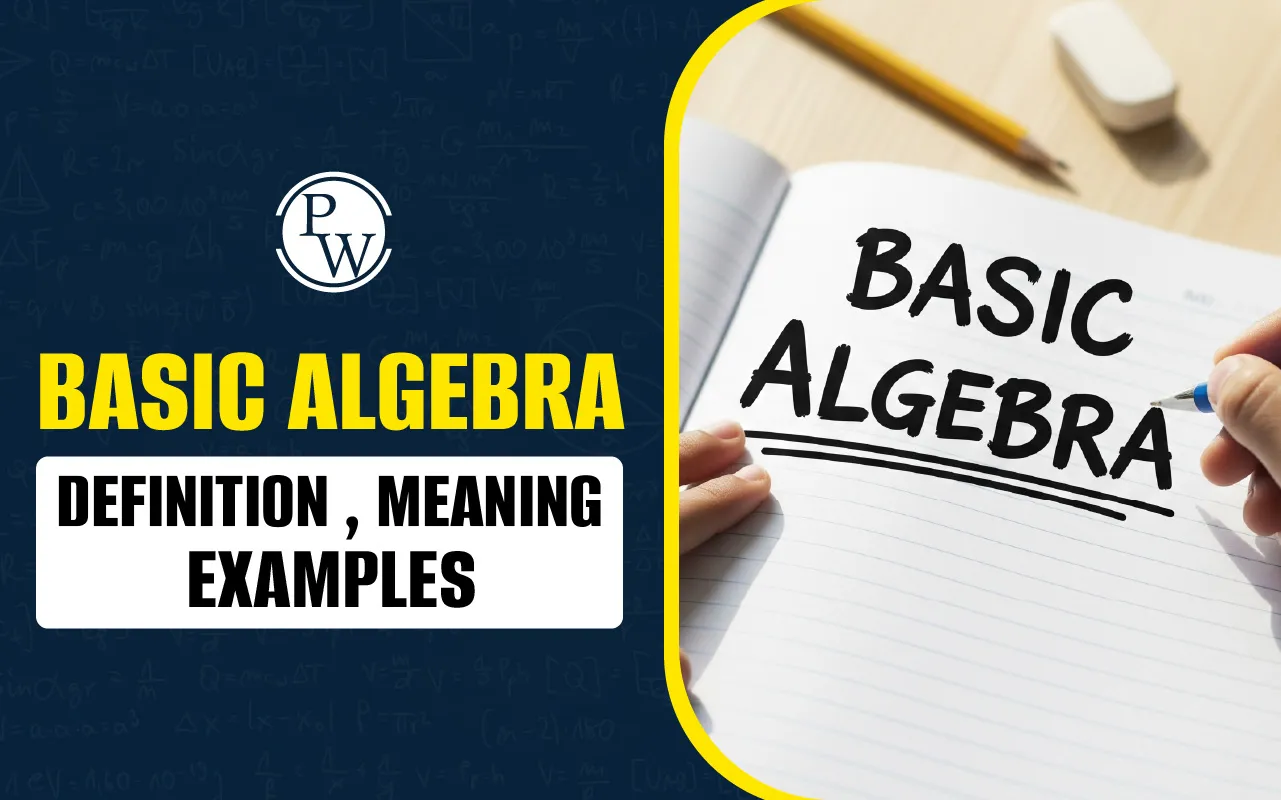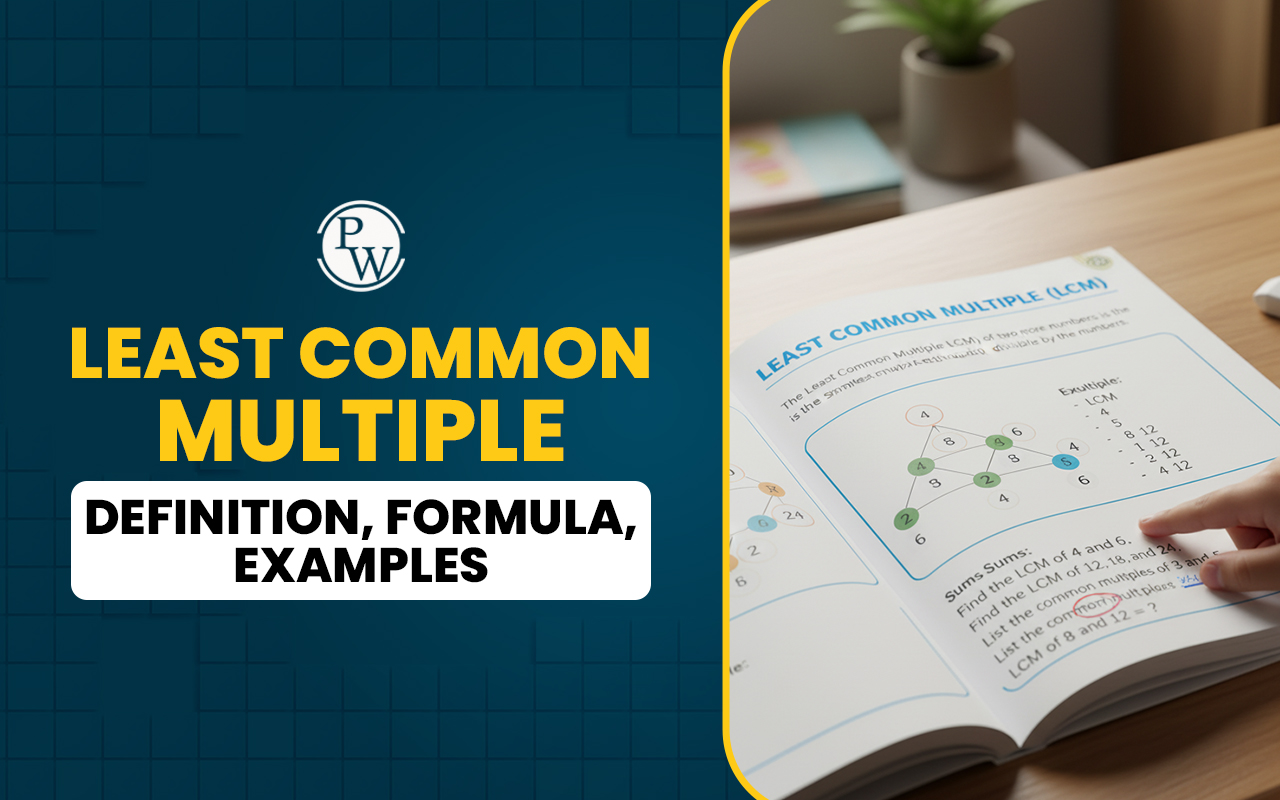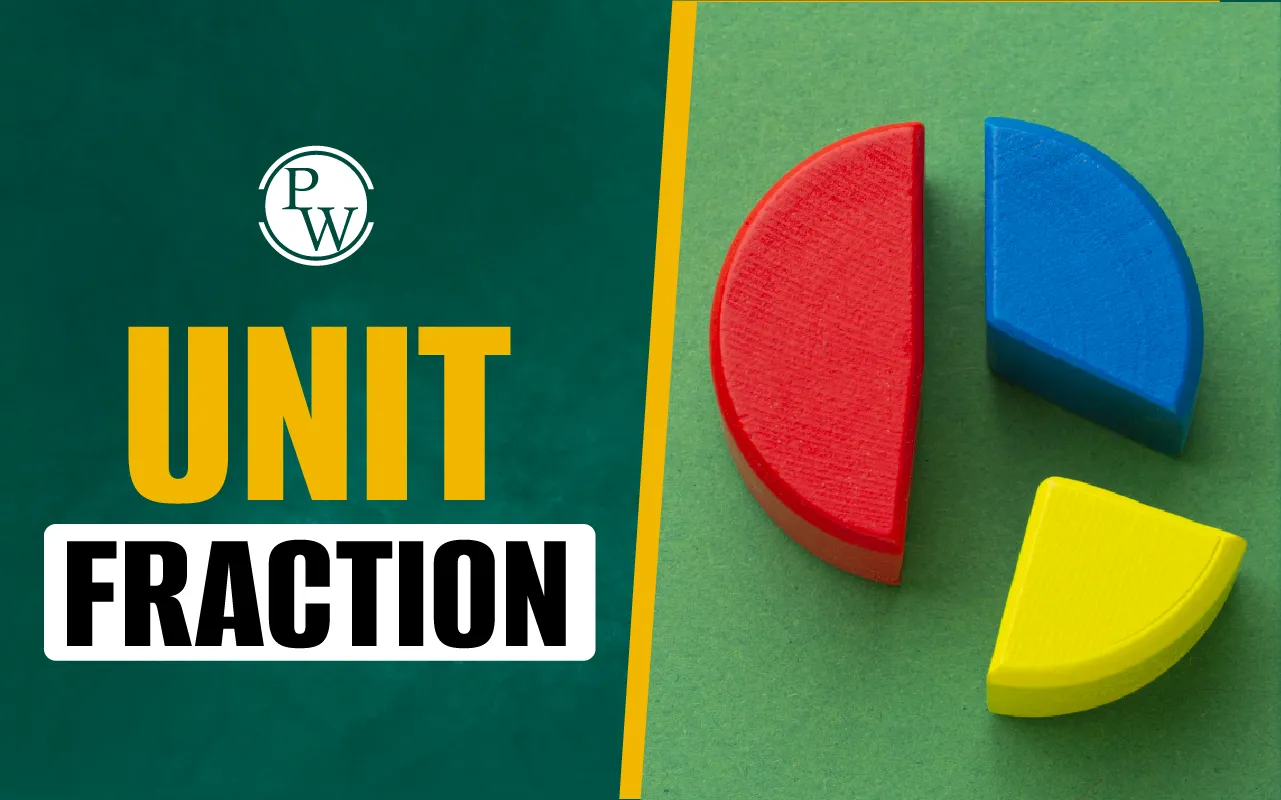

Basic Algebra is one of the most important parts of mathematics. Algebra in maths uses letters like x, y, or z to solve problems with unknown numbers. For example, if we know that x + 3 = 5, we can find out what x is. This way of solving problems using variables and numbers is called algebra.
We use basic algebra in our everyday lives. It helps in solving puzzles, doing calculations, and even understanding money and time problems. This article will give you an easy to understand introduction to algebra by explaining what algebraic expressions are and how to solve algebra equations with practice questions. So, keep reading.
Read More: Basic Geometrical Ideas
What Is Basic Algebra?
Algebra is a branch of mathematics that helps us find answers to questions where some numbers are missing. Instead of only using numbers, we also use letters like x, y, z, p, or q to show values we don’t know yet. These letters are called variables because their value can change.
We use algebra to solve equations, find missing values, and understand some useful things like bank interest, prices, or distance in daily life. For example, in the algebraic expression x + 6 = 10, we can find the value of the number x.
Algebraic Expressions Explained with Examples
An algebraic expression is a combination of numbers, letters (called variables), and math operations like +, –, ×, or ÷. We use algebraic expressions in mathematics to represent something that we don’t know completely yet. In basic algebra, we often see expressions like 3x + 4 or x − 7. Where,
-
3 and 4 are called constants because their values never change.
-
x is a variable, which means it can change.
-
And + or – are operations, showing what to do with the numbers.
These algebraic expressions are the starting point of many algebra problems. As you keep learning, you can use these algebraic expressions to solve higher-level questions in school.
Read More: Types of Line in Math
Common Signs and Symbols Used in Basic Algebra
In basic algebra, we use different mathematical signs and symbols to show how numbers and letters are related to each other. These signs help us write algebraic expressions and algebra equations in a proper way. Here are the main signs used in Basic Algebra:
-
+ for addition
-
− for subtraction
-
× for multiplication
-
÷ for division
-
= shows two sides are the same
-
≠ shows two sides are different
-
< shows one value is smaller
-
> shows one value is bigger
-
≤ smaller or maybe the same
-
≥ bigger or maybe the same
Basic Algebra Rules You Must Know
Basic Algebra rules help us in solving problems in the right way. These rules tell us how to add, multiply, and group numbers and letters in an algebraic expression. Find the basic rules of Algebra here:
-
Commutative Rule of Addition, where we can change the order of numbers while adding. For example: x + 3 = 3 + x
-
Commutative Rule of Multiplication, where we can change the order of numbers while multiplying. For example: 2 × x = x × 2
-
Associative Rule of Addition tells us that when adding three numbers or letters, it doesn’t matter how we group them. For example: (x + 2) + 3 = x + (2 + 3)
-
Associative Rule of Multiplication explains that while multiplying, the grouping doesn’t change the answer. For example: (2 × x) × 4 = 2 × (x × 4)
-
Distributive Rule of Multiplication tells us that we can multiply a number by a group inside brackets. For example: 2 × (x + 3) = 2x + 6
It is important for students to remember and understand these simple rules, as they help us solve many algebra equations in a proper way.
Read More: Area and Perimeter
Basic Algebra Equations with Simple Examples
Basic algebra equations are simple math problems that help us find missing numbers. In these problems, we use letters like x, y, a, b, p, or q to show the values that are not yet known. These letters are called variables. We also use numbers (constants) and math signs like +, −, ×, or ÷ to build the equation.
A basic algebra equation always has an equal sign (=). This means both sides of the equation must be the same. To solve it, we just need to find the value of the letter that makes both sides equal.
Some Examples of Algebra Equations:
In order to understand Algebra Equations better, go through the following examples:
Example 1: x + 9 = 15
Here, x is the variable. The numbers 9 and 15 are constants, and + is the operator.
This equation says that some number, when added to 9, gives 15.
-
So, to solve it, we subtract 9 from both sides: x = 15 − 9, which gives x = 6.
Example 2: 4y − 2 = 14
In this equation, y is the variable, and the numbers 4, 2, and 14 are constants. The operators used are multiplication (hidden in 4y) and subtraction.
-
The equation means 4 times y, minus 2, gives 14. To solve it, we first add 2 to both sides, which gives 4y = 16.
-
Then we divide both sides by 4 to get the value of y. So, y is equal to 4.
Types of Algebra Equations
In basic algebra, there are different types of equations. These types of Algebra Equations depend on the highest power of the variable (like x or y) in the equation. Check the three main types of Algebra Equations explained here in a simple way:
-
Linear Equations: These are the most common and easiest type of equations in linear algebra. In a linear equation, the variable has a power of 1.
For example, in the equation x + 3 = 9, x is the variable, and there's no square or cube added with it. These equations show simple relationships using addition, subtraction, multiplication, or division.
-
Quadratic Equations: These equations have a variable with a power of 2, like x². A general form looks like this: ax² + bx + c = 0, where a, b, and c are numbers.
For example, in x² + 5x + 6 = 0, x is squared. Quadratic equations are a little more advanced than linear equations and can have up to two answers for x.
-
Cubic Equations: These types of Algebra Equations have the variable with the power of 3.
For example: x³ − 2x² + x − 3 = 0. You will use Cubic equations in higher-level topics like 3D geometry and calculus.
Solved Algebra Problems for Practice
Find some basic algebra problems along with their solutions explained in a simple way for you here. These examples will help you understand how to find the value of a variable in an algebraic expression or equation.
1. Find the value of x in: x + 7 = 12.
Solution: To find the value of x, subtract 7 from both sides of the equation. You will get x = 12 − 7. So, the answer is x = 5.
2: Find the value of y in 3y = 18.
Solution: To find y, divide both sides by 3. So, x = 18 ÷ 3. The answer is: x = 6.
3: Find the value of y in y − 4 = 9.
Solution: To do this, add 4 to both sides. Now we get y = 9 + 4. So, the answer is: y = 13.
Also Read: Simple Equations
Basic Algebra Worksheets
Now that you’ve learned about basic algebra, its meaning, rules, and examples, it’s time to check how much you understood. Try solving the questions given in the Algebra Worksheets below on your own:
Question 1: x + 5 = 12. Find the value of x.
Question 2: Riya had some pencils. She gave 4 pencils to her friend and was left with 9 pencils. How many pencils did Riya have at the beginning?
Question 3: 3y = 21. Find the value of y.
Question 4: A boy had a number of coins in his pocket. He spent 6 coins at the shop and now has 10 coins left. How many coins did he have before going to the shop?
Question 5: Sarah bought 2 notebooks and paid INR 30 in total. Each notebook costs the same. What is the cost of one notebook?
Answers:
-
x = 7
-
13 pencils
-
y = 7
-
16 coins
-
INR 15 per notebook
Strengthen Your Child's Math Basics With CuriousJr
Many children find school maths tough, especially when they don’t get enough time to understand the basics in class. As a parent, it can be hard for you to see them feel confused while doing homework.
That’s where CuriousJr’s Online Tuition Classes can help. Designed for students from Class 3 to Class 9, these live sessions focus on building clear concepts from the basics. Your child starts learning in a better way with these online tuitions because:
-
Every session has two teachers; one explains the topic clearly, while the other helps with doubts after the class.
-
Your child also gets help with their regular school homework. They also get extra worksheets for practicing what they've learned.
-
Doubts are solved during and after classes as well, so your child doesn’t stay stuck.
-
We understand how much you worry about your child's learning; that's why we provide regular progress updates. So that you can stay in the loop.
Sometimes your child just needs a little extra help at the right time, which can make a big difference. Book a demo class and see how CuriousJr can support your child’s learning in math.
Basic Algebra FAQs
What is basic algebra in maths?
What are algebra equations?
Why is basic algebra important?
Give an example of an algebraic expression.













